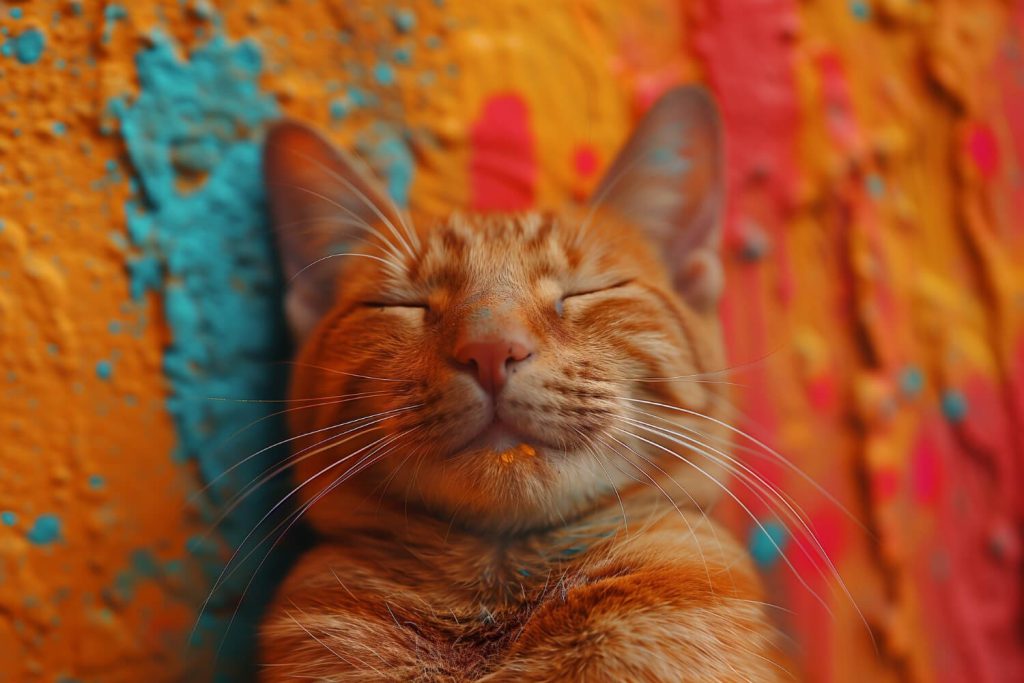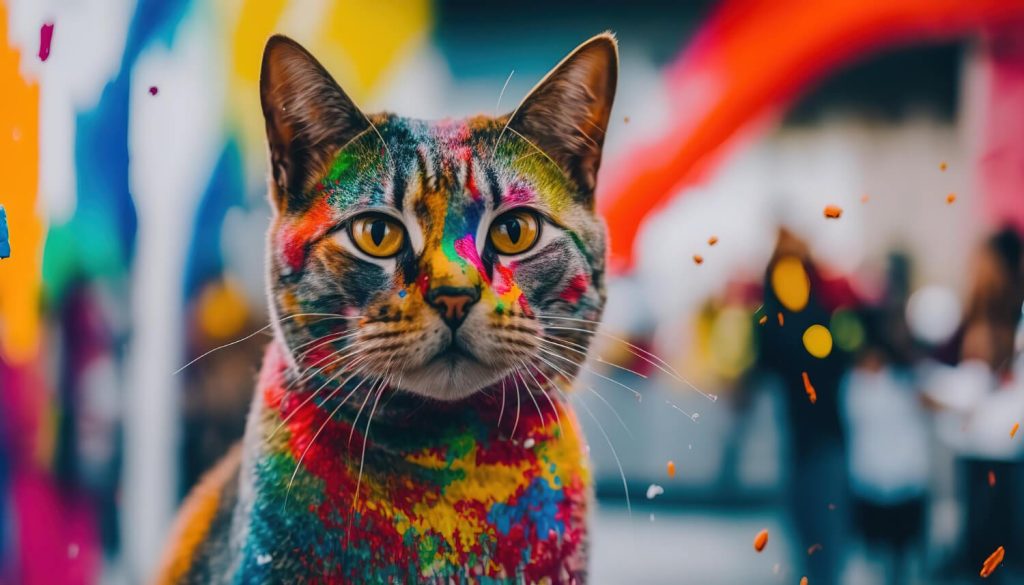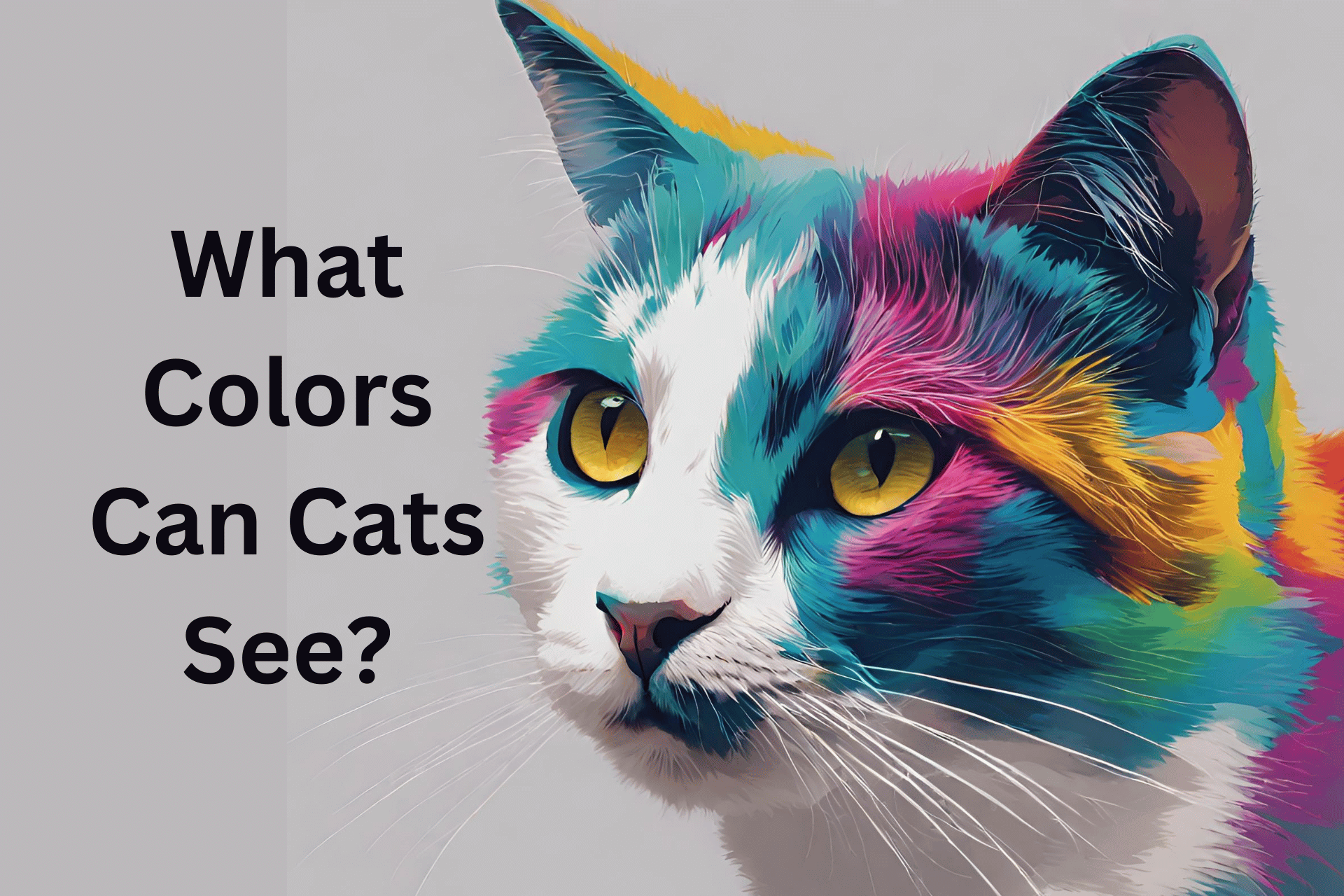A Cat’s Eye View: What Colors Can Cats See
Contrary to the common belief that cats see only in black and white, the feline visual system is far more complex and fascinating.
As pet owners, it’s essential to understand the unique way our feline companions perceive the world around them. Just as dogs can see certain colors, so can cats! This blog will help you, and me, find out what colors can cats see best.
This way, we will know which toys we should buy our friends so that they can have maximum fun!
Key Takeaways
- Cats are not completely colorblind, but their color vision is weaker than humans’.
- Cats can see shades of blue, green, and yellow well.
- Reds, oranges, browns, violets, and pinks appear muted or grayish to cats.
- Cats have excellent night vision due to more rod cells in their eyes.
- Cats have a wider field of view than humans, but poorer visual acuity for fine details.
Are Cat’s Color-Blind?
Recent studies have revealed that cats are not color-blind, as previously thought. While their color vision is not as robust as ours, they do possess the ability to perceive a range of hues, primarily in the blue-violet and yellow-green spectrum.
This means that cats can distinguish between shades of blue, green, and yellow, but may struggle to differentiate between reds and greens.
Interestingly, cats have a higher concentration of rod cells in their retinas, which are responsible for detecting movement and low-light conditions. This adaptation allows them to excel in hunting and navigating their environments, even in the darkest of settings.

However, their reliance on rod cells also means that cats have a lower visual acuity compared to humans, making it harder for them to discern fine details and intricate patterns.
Understanding the feline visual system has important implications for pet owners. By recognizing the colors and lighting conditions that cats can best perceive, we can create enriching environments that cater to their unique needs.
This knowledge can inform our choices in toys, furniture, and even the color schemes of our homes, ensuring that our feline companions can thrive and enjoy their surroundings to the fullest.
What Colors Can Cats See
What color can cats see the best? Let’s take a look at this table of colors cat’s can see and how well.
| Color | How Cats See It |
| Red | Appears muted, grayish, or difficult to distinguish from green or brown. |
| Orange | Similar to red, may appear muted, grayish, or difficult to distinguish from other colors. |
| Yellow | Visible and well-distinguished by cats. |
| Green | May appear muted or even like a shade of gray, especially for greens with a strong red component. Yellow-greens might be more visible. |
| Blue | Visible and well-distinguished by cats. |
| Violet | May appear similar to blue or even like a shade of gray for cats. |
| Pink | Likely appears muted, grayish, or difficult to distinguish from other colors, similar to red. |
| Purple | May appear similar to blue or violet, or even like a shade of gray for cats. |
| Brown | Likely appears muted, grayish, or difficult to distinguish from other colors, similar to red. |
Why Cats See the World Differently: Adaptations for Hunting and Survival
Cats have evolved a unique visual system that allows them to perceive the world in a fundamentally different way than humans. As skilled predators, their visual adaptations are finely tuned for hunting and survival in their environments.

One of the most notable differences is the structure of the cat’s eye. Cats have a higher density of rod photoreceptors, which are responsible for detecting motion and low light. This gives them exceptional night vision, allowing them to hunt effectively in the dark.
Additionally, the tapetum lucidum, a reflective layer behind the retina, further enhances their low-light vision by reflecting light back through the retina, effectively doubling the photons available for detection.
Cats also have a wider field of view than humans, with a visual field that extends almost 200 degrees horizontally. This panoramic vision helps them detect potential prey or threats from a wide range of angles, a crucial advantage for successful hunting.
The vertical slit-like pupils of cats allow for better depth perception and focus, making it easier to track and pounce on moving targets.
FAQ
1. Are cats really colorblind?
Contrary to popular belief, cats are not colorblind. They have the ability to perceive a range of colors, although their color vision is more limited compared to humans.
2. What colors can cats see?
Cats primarily see shades of blue, green, and yellow. They have difficulty distinguishing between reds and greens due to their unique retinal structure.
3. Can cats see in the dark?
Yes, cats have exceptional night vision due to a higher concentration of rod cells in their retinas. This allows them to see in low-light conditions more effectively than humans.
4. How does a cat’s vision differ from human vision?
Cats have a wider field of view, better night vision, and a greater sensitivity to motion compared to humans. However, their visual acuity for discerning fine details is lower than that of humans.







